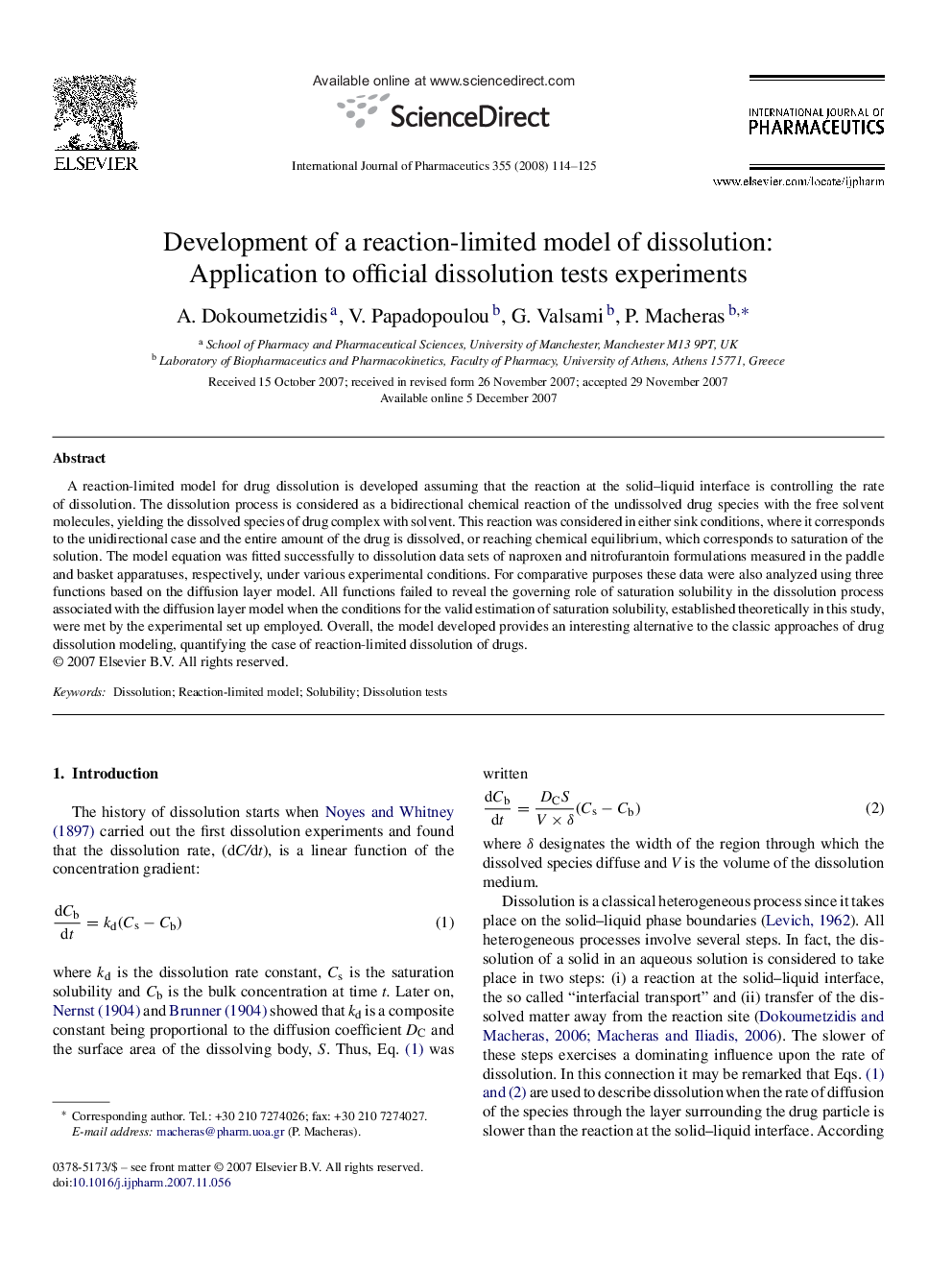| Article ID | Journal | Published Year | Pages | File Type |
|---|---|---|---|---|
| 2505576 | International Journal of Pharmaceutics | 2008 | 12 Pages |
A reaction-limited model for drug dissolution is developed assuming that the reaction at the solid–liquid interface is controlling the rate of dissolution. The dissolution process is considered as a bidirectional chemical reaction of the undissolved drug species with the free solvent molecules, yielding the dissolved species of drug complex with solvent. This reaction was considered in either sink conditions, where it corresponds to the unidirectional case and the entire amount of the drug is dissolved, or reaching chemical equilibrium, which corresponds to saturation of the solution. The model equation was fitted successfully to dissolution data sets of naproxen and nitrofurantoin formulations measured in the paddle and basket apparatuses, respectively, under various experimental conditions. For comparative purposes these data were also analyzed using three functions based on the diffusion layer model. All functions failed to reveal the governing role of saturation solubility in the dissolution process associated with the diffusion layer model when the conditions for the valid estimation of saturation solubility, established theoretically in this study, were met by the experimental set up employed. Overall, the model developed provides an interesting alternative to the classic approaches of drug dissolution modeling, quantifying the case of reaction-limited dissolution of drugs.
